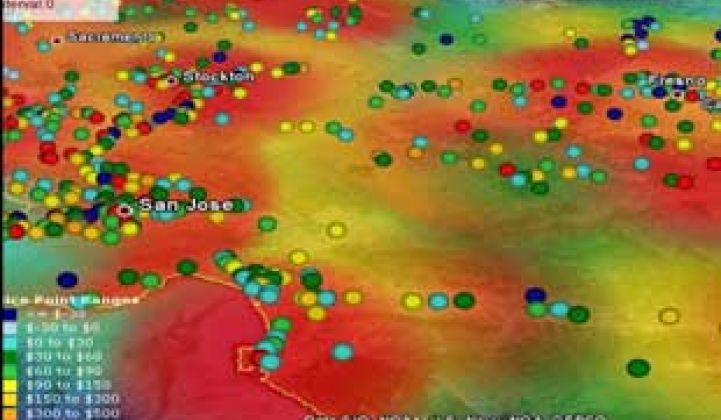Looking all the way back to 2012, it could be remembered as the year the utility industry started to take a serious look at big data and how to manage it.
With millions of nodes being deployed across the electrical grid, all of the information coming back can overwhelm utilities. There is a need to not only make sense of the data, but to use it to look forward.
“Over the last year, everyone has invested in smart grid and now are paying the price of not figuring out how to do something with the data that the infrastructure generates,” said Steve Ehrlich, VP of Marketing at Space-Time Insight, a startup that offers geospatial data analysis and visualization.
Space-Time Insight announced on Monday it is moving from real-time applications into predictive analytics with its situational intelligence product suite 4.0. The news comes along with a big utility win, Hydro One, which will be using Space-Time Insight's predictive analytics for asset maintenance.
“They were using paper before this,” said Ehrlich. With Space-Time Insight, Hydro One will be able to drill down to individual substations, feeder lines or transformers.
Space-Time Insight’s technology, which incorporates any type of data the utility has, from SCADA and GIS to weather and Twitter feeds, integrates and correlates all the data to be analyzed for anomalies. Its special sauce is in normalizing and cross-referencing in-memory data to provide mapping and analytics tools that can run at high speeds with high accuracy.
The predictive analytics fall into three areas. The first is asset maintenance. Instead of deploying additional sensors, Space-Time Insight will use whatever information is already coming back from equipment. For Hydro One, Ehrlich said the utility has a lot of assets reaching the end of their useful lifecycles. “It’s very hard to make a rate-case justification to say you need to replace everything at once,” he said. “[Companies] need a system to help justify the investment.”
Besides asset maintenance, which is a burgeoning market for software companies, Space-Time Insight will also offer predictive analytics for storms. Currently, no utility has picked up the application yet, but Ehrlich expects it to be the most popular feature of the new offerings.
The visualization software can show different storm trajectories and help utilities understand the potential impacts on not only assets, but also customers. As the storm hits, analysis can be done on the fly to manage the response.
The third area of predictive applications is renewables. “Understanding wind speed tomorrow or cloud cover are just complete art forms right now,” said Ehrlich. Space-Time Insight works with various weather analytics companies and sees its offering in this area as being interesting to more than just the utility industry.
One of the benefits of Space-Time Insight's products is that the visualizations come in various flavors, which could be for customer service reps, grid operators or executives. “Our primary mission is to break down those silos,” Ehrlich said of the business structure at many utilities. He added that many utility customers start with just a few applications, such as wide-area situational awareness or asset intelligence, but quickly expand to an enterprise license.
The latest offerings in predictive analytics are tailored to the utility industry, but Space-Time Insight has ambitions far beyond the grid. This year, the San Mateo-based company expects to move into oil and gas, federal government services and logistics/transportation.
Space-Time Insight and renewables:



